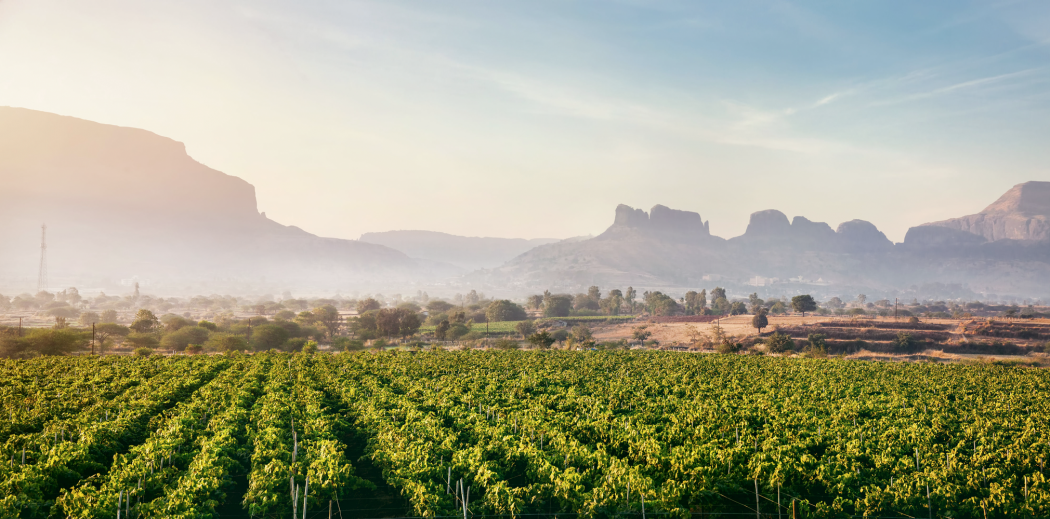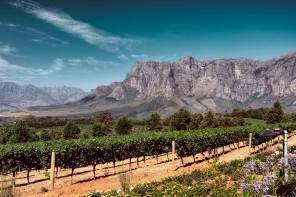In my senior year of college, my roommate kept a map on his wall to mark off all the countries he’d visited, someday aiming to mark off the entire globe. That got me thinking of another admirable goal, perhaps one more suited for the bank account of a twenty something: doing the same, but for wine (and from my couch). I had anticipated many countries would trip me up — for instance, India. I’m glad to be proven wrong.
Indian Wine’s Tumultuous Beginning, Middle, and (Almost) End
From the day Persian traders brought viticulture to India’s soil in the 4000s BCE, Indian wine has never had an easy go of it. Records of early wine drinking are scattered and it wasn’t until the 4th century BCE that someone wrote about the consumption of grape-based wine. That someone was Chanakya, chief minister to Emperor Chandragupta Maurya, and as the resident killjoy, he decided he hated it. His disdain foreshadowed the trouble to come.
As the millennia traipsed on, wine remained a drink for the upper castes and rarely left India. When the Mughal Empire came to power in the 16th to 19th centuries, they outlawed alcohol under Islamic dietary laws (though we can thank them for the Taj Mahal). However, during the 16th century, Portuguese settlers managed to bring in port-style wine to Goa, and the beginning of the British rule in the mid-19th century ushered in the return of wine production. Vineyards boomed in the Baramati, Kashmir, and Surat regions, and Indian wines finally edged their way into international markets and competitions. Unfortunately, just as production started to increase, phylloxera struck the region at the end of the 19th century. Any attempts to salvage the industry suffered when British rule ended in 1947 and the Constitution of India attempted to ban alcohol, converting some of the remaining vineyards to table grape and raisin production.
Fast forward to the 1980s, when a perfect storm of factors helped reinvigorate the Indian wine industry. The Tonia Group, which imported a wide variety of wines, set up shop in Goa; an Indian middle class emerged; international investments stimulated growth, and expectations for India’s wine regions boomed.
In the following decades, however, Indian wine producers ran into a new onslaught of hurdles, including high taxes, faltering tourism, and decreased economic growth. It didn’t help that when the first growers made their foray into wine, the results were less than spectacular and drinkers grew wary. Not that there were many drinkers in the first place; in 2010, the Wine Institute calculated that each person in India drank an average of 0.01 liters, or two teaspoons of wine, annually. In contrast, average consumption in France was 45.70 liters.
Despite the difficulties, since 2009, the long-held expectations of India as a major wine region don’t seem so far off. The industry has doubled in the past eight years, and wine makers are working to reduce importing taxes so more international bottles can reach Indian consumers without an alienating price point. French winemakers have also stepped back in, including legendary Moët Hennessy, which recently launched a winery in Nashik.
Long story short: when reaching for a glass to pair with your butter chicken, keep in mind that Indian wine is out there.
Where to Drink, and What to Drink
India’s climate may not seem ideal for wine, but certain areas make for suitable terroir that are said to rival more notable global growing areas. In the north, visit Kashmir and Punjab. In the south, elevated and mild Maharashtra and Karnataka are the main regions, though Nadu, Tamil, Himachal Pradesh, and Jammu are increasing in popularity.
The heart of India’s wine culture is Nashik, 100 miles northeast of Mumbai in the Maharashtra region, comparable in climate to areas of Spain, Australia and California. Sula Vineyards is the area’s, and the country’s, most notable vineyard (it also hosts a weekend-long wine festival where you can sleep among the vines, and if that’s not motivation to visit, I’m not sure what is).
Drinking your way through India’s vineyards, you’ll find imported and indigenous varietals running the gamut of options from dry to fortified. In the latter category are grapes like Arkavati, Gulabi (Black Muscat), and Arkashyam, while popular imports include Cabernet Sauvignon and Chenin Blanc in Maharashtra, and Sauvignon Blanc, Cabernet Sauvignon, and Shiraz in Karnataka. The most common grape you’ll find is the Turkish Saltana, which yields a dry white.
The story of India’s wine regions is one of high expectations and faltered beginnings, but may all oenophiles exploring the world through their vino hope that the country’s wine soon gets the recognition it deserves.









Can you reccoment any specific wines from northern India?
Thanks!